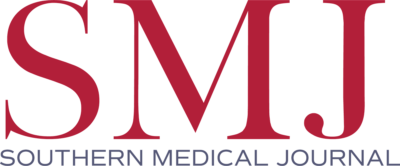References
1. Aviv-Reuven Sed, Rosenfield A. Publication patterns’ changes due to the COVID-19 pandemic: a longitudinal and short-term scientometric analysis. Scientometrics 2021;126:6761-6784.
2. Miller R, Tsai J. Scholarly publishing in the wake of COVID-19. Int J Radiat Oncol Biol Phys 2020;108:491-495.
3. Krukowski R, Jagsi R, Cardel M. Academic productivity differences by gender and child age in science, technology, engineering, mathematics, and medicine faculty during the COVID-19 pandemic. Journal of Womens Health 2021;30:341-347.
4. Myers K, Yang Tham W, Yin Y, et al. Unequal effects of the COVID-19 pandemic on scientists. Nat Hum Behav 2020;4:880-883.
5. Tumin D, Brewer K, Cummings D, et al. Estimating clinical research project duration from idea to publication. J Investig Med 2022;70:108–109.
6. Noble P, Eyck P, Roskowski R, et al. NIH funding trends to US medical schools from 2009 to 2018. PLoS One 2020;15:e0233367.
7. Carr P, Raj A, Kaplan S, et al. Gender differences in academic medicine: retention, rank and leadership comparisons from the National Faculty Survey. Acad Med 2018;93:1694-1699.
8. Braxton M, Infante Linares J, Tumin D, et al. Scholarly productivity of faculty in primary care roles related to tenure vs non-tenure tracks. BMC Med Educ 2020;20:174.
9. Zhang F, Yan E, Niu X, et al. Joint modeling of the association between NIH funding and its three primary outcomes: patents, publications and citation impact. Scientometrics 2018:117;591-602.
10. Warner E, Carapinha R, Weber G, et al. Considering context in academic medicine: differences in demographic and professional characteristics and in research productivity and advancement metrics across seven clinical departments. Acad Med 2015:90;1077-1083.
11. Eagan K, Garvey J. Stressing out: connecting race, gender and stress with faculty productivity. J Higher Educ 2015;86:923-954.
12. Tumin D, Khanchandani A, Sasser G, et al. Factors influencing US hospital and medical school participation in pediatric COVID-19 research. Hosp Pediatr 2021;12:8-14.
13. Association of American Medical Colleges. Faculty Roster Benchmark Reports, 2019.
https://services.aamc.org/famous. Published 2019. Accessed April 27, 2022.
14. Cui R, Ding H, Zhu F. Gender inequality in research productivity during the COVID-19 pandemic. Manufacturing Service Operations Manag 2022;2:707-726.
17. Gouda D, Singh PM, Gouda P, et al. An overview of health care worker reported deaths during the COVID-19 pandemic. J Am Board Fam Med 2021; 34(suppl):S244-S246.
19. covidestim. COVID-19 nowcasting. A complete, current, and granular picture of COVID-19 epidemic in the United States.
https://covidestim.org/. Accessed February 14, 2022.
20. Singh JA, Bandewar SV, Bukusi EA. The impact of the COVID-19 pandemic response on other health research. Bull World Health Organ 2020;98:625-631.
21. Mohan S. Challenges of clinical research administration during the COVID-19 pandemic. Narrat Inq Bioeth 2021;11:101-105.
22. Gordon B. Research during the pandemic: views from both sides of the fence. Narrat Inq Bioeth 2021;11:39-45.
23. Klont F, Hopfgartner G. Bioanalytical research and training in academia during the COVID-19 pandemic. Bioanalysis 2020;12:1209-1211.
25. Giannos P, Kechagias KS, Katsikas Triantafyllidis K, et al. Spotlight on early COVID-19 research productivity: a 1-year bibliometric analysis. Front Public Health 2022;10:811885.
26. Raynaud M, Goutaudier V, Louis K, et al. Impact of the COVID-19 pandemic on publication dynamics and non-COVID-19 research production. BMC Med Res Methodol 2021;21:255.
27. Riccaboni M, Verginer L. The impact of the COVID-19 pandemic on scientific research in the life sciences. PLoS One 2022;17:e0263001.
28. Laraja K, Mansfield L, de Ferranti S, et al. Disproportionate negative career impact of the COVID-19 pandemic on female pediatric cardiologists in the northeast United States. Pediatr Cardiol 2022;43:1913-1921.
29. Kotini-Shah P, Man B, Pobee R, et al. Work-life balance and productivity among academic faculty during the COVID-19 pandemic: a latent class analysis. J Womens Health (Larchmt) 2022;31:321-330.
30. Ginther DK, Basner J, Jensen U, et al. Publications as predictors of racial and ethnic differences in NIH research awards. PLoS One 2018;13:e0205929.
31. Sebo P, Oertelt-Prigione S, de Lucia S, et al. COVID-19: a magnifying glass for gender inequalities in medical research. Br J Gen Pract 2020;70:526-527.
32. Molina-Leyva A, Descalzo MA, García-Doval I. Clinical research in dermatology: resources and activities associated with a higher scientific productivity. G Ital Dermatol Venereol 2019;154:386-391.
33. Mullen R, Weidner A, Liaw W, et al. Family medicine research capacity in the USA. Fam Pract 2021;38:187-189.
34. Farooq F, Mogayzel PJ, Lanzkron S, et al. Comparison of US federal and foundation funding of research for sickle cell disease and cystic fibrosis and factors associated with research productivity. JAMA Netw Open 2020; 3:e201737.
35. Pololi LH, Vasiliou V, Bloom-Feshbach K. Midcareer medical school research faculty perspectives on vitality and professionalism during the COVID-19 pandemic. JAMA Netw Open 2021;4:e2120642.
36. Balaguru L, Dun C, Meyer A, et al. NIH funding of COVID-19 research in 2020: a cross-sectional study. BMJ Open 2022;12:e059041.
37. Anthony-Townsend N, Beech BM, Norris KC. Historically Black medical schools: addressing the minority health professional pipeline and the public mission of care for vulnerable populations. In: Professional Education at Historically Black Colleges and Universities: Past Trends and Outcomes, Fountaine Boykin T, Hilton A, and Palmer R, eds. New York: Routledge: 57-73.
38. Deng S, Lai Y, Myers SL, et al. Foundation giving and economics research productivity at HBCUs: empirical evidence from the Koch Foundation. J Econ Race Policy 2021;4:215-236.
39. Dahlberg ML, Higginbotham E, eds. The Impact of COVID-19 on the Careers of Women in Academic Sciences, Engineering, and Medicine. Washington, DC: The National Academies Press; 2021.
40. Squazzoni F, Bravo G, Grimaldo F, et al. Gender gap in journal submissions and peer review during the first wave of the COVID-19 pandemic. A study on 2329 Elsevier journals. PLoS One 2021;16:e0257919.
43. Moreland A, Herlihy C, Tynan MA, et al. Timing of state and territorial COVID-19 stay-at-home orders and changes in population movement—United States, March 1-May 31, 2020. MMWR Morb Mortal Wkly Rep 2020;69:1198-1203.




